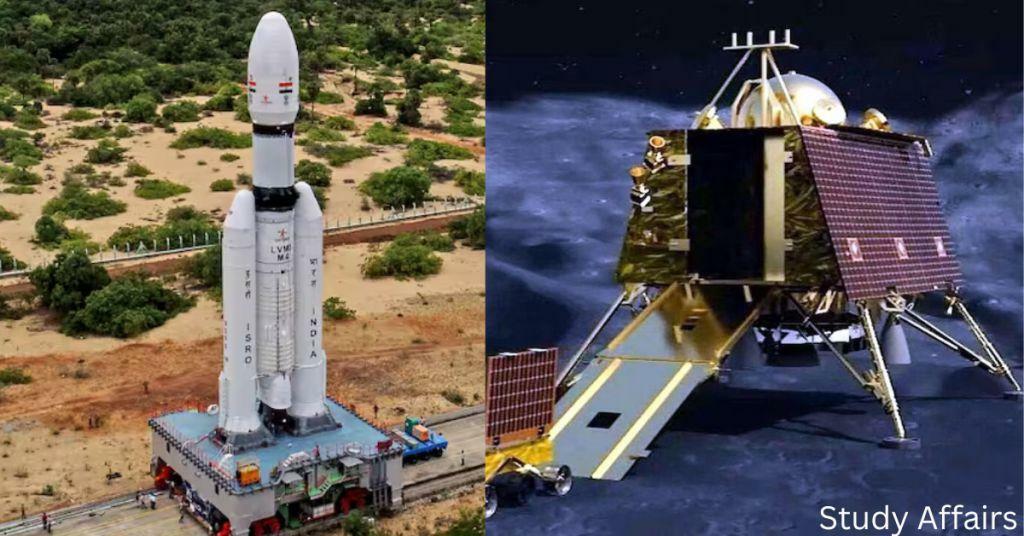Chandrayaan 3: India’s next leap in lunar exploration

Indian Space Research Organization (ISRO) is all set to embark on its next lunar mission with Chandrayaan 3, after the success of its earlier missions. It aims to further expand our understanding of the Moon’s surface and its resources. With advanced capabilities and an ambitious set of scientific objectives, the mission holds great potential for India’s space exploration efforts.
Launch Time and Date
The launch of Chandrayaan 3 is a highly anticipate event for space lovers around the world. Chandrayaan 3 will be launched on July 14 at 2.35 pm. ISRO is working diligently to ensure a successful mission. Based on the experience gained from previous missions, It expected to be launch on Geosynchronous Satellite Launch Vehicle Mark III (GSLV Mk III), which is known for its robust capabilities.
Landing Date
After launch, Chandrayaan 3 will take around three to four days to reach the lunar surface. The landing date is also subject to confirmation, as it depends on the specific trajectory and operational considerations. However, ISRO’s careful planning and dedication to precision suggests that the landing will take place within weeks of launch.
Chandrayaan 3 Mission Objectives
Chandrayaan 3 carries a comprehensive set of scientific objectives aimed at advancing our understanding of the Moon’s geology, resources and evolution. These objectives include:
A. Lunar Surface Exploration: Chandrayaan 3 will carry advanced instruments to analyze the composition, mineralogy and geological features of the Moon’s surface. By studying the Moon’s topography in detail, scientists hope to gain insight into its geological evolution.
B. Lunar Exosphere and Volatile Studies: It will probe the thin exosphere of the Moon and study the presence of volatile elements and compounds. This research will contribute to our understanding of the Moon’s geophysical processes and the potential for future resource use.
C. Seismic Activity Analysis: Based on the successful deployment of seismometers on Chandrayaan 2, Chandrayaan 3 aims to further study the seismic activity of the Moon. This will shed light on the internal structure of the Moon and provide valuable data for comparative planetary seismology.
Difference from Previous Chandrayaan Mission
Chandrayaan 3 builds on the achievements and lessons learned from its predecessors, Chandrayaan 1 and Chandrayaan 2. India’s first lunar mission was Chandrayaan 1, which successfully orbited the Moon and discovered evidence of water molecules on its surface. Chandrayaan 2, although its lander experienced a hard landing, successfully placed an orbiter in lunar orbit and furthered our understanding of the Moon’s south polar region. It aims to incorporate the best elements of both the missions and overcome the challenges faced during the landing phase of Chandrayaan 2.
History of Chandrayaan
The Chandrayaan program represents India’s ambitious journey in lunar exploration. It began with Chandrayaan 1, launched on October 22, 2008, which became the first Indian mission to reach the Moon. The discoveries of Chandrayaan 1 paved the way for Chandrayaan 2, which was launch on July 22, 2019. Although the landing of the Vikram lander did not go as planned, the mission was consider a significant achievement, establishing India as a major player in the global space community. Now, with Chandrayaan 3 on the horizon, India aims to make further progress in lunar exploration.
Chandrayaan 3 Mission Cost
The exact mission cost for Chandrayaan 3 has not been publicly disclosed, but it is expected to be a significant investment for India’s space programme. Previous missions such as Chandrayaan 1 and 2 demonstrated ISRO’s ability to achieve remarkable scientific milestones within a limited budget. The cost-effectiveness of ISRO’s missions is a testament to the organization’s commitment to maximizing scientific returns while optimizing resources.
Chandrayaan 3 marks an important milestone in India’s space exploration journey. With its ambitious scientific objectives, advanced technology and lessons learned from previous missions, it promises to uncover new discoveries about the Moon’s surface and resources. As the world eagerly awaits the launch of Chandrayaan 3, ISRO’s commitment to advancing the frontiers of knowledge and fostering international collaboration is set to inspire future generations of scientists and space enthusiasts.
Click here to read this article in Hindi.


